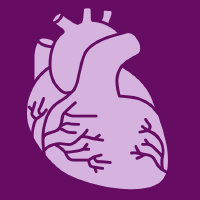Topic Editors

Cardiovascular Disease in Special Populations: From Basic Science to Clinical Practice
Topic Information
Dear Colleagues,
Research on cardiovascular diseases (CVDs) has experienced significant growth in recent years, increasing our understanding and fueling the discovery of prominent therapeutic options. Despite these advancements, there are still many unknowns regarding the manifestation and treatment of CVDs in special populations. Special populations can encompass a wide range of physical, sensory, cognitive, and metabolic factors, each influencing cardiovascular health differently. As such, there is a significantly greater health concern in special populations, as recent studies have found that factors specific to special populations contribute to heightened CVD risk factors and early mortality. In addition, it is unclear as to whether common CVD treatment options are effective in CVD patients from special populations. Therefore, the goal of this research topic is to provide a scientific platform that fosters our clinical understanding of the manifestation as well as the effectiveness of therapeutic interventions in special populations with CVD. Both research and review articles are welcome.
Dr. Song-Young Park
Dr. Gwenael Layec
Topic Editors
Keywords
- cardiovascular disease
- cardiovascular medicine
- cardiovascular interventions
- diabetes
- coronary artery disease
- multiple sclerosis
- neuropathy
- spinal cord injury
- peripheral artery disease
- cerebral vascular disease
Participating Journals
| Journal Name | Impact Factor | CiteScore | Launched Year | First Decision (median) | APC | |
|---|---|---|---|---|---|---|

Antioxidants
|
6.0 | 10.6 | 2012 | 16.9 Days | CHF 2900 | Submit |

Biomedicines
|
3.9 | 5.2 | 2013 | 14.6 Days | CHF 2600 | Submit |

Disabilities
|
- | 1.1 | 2021 | 41.5 Days | CHF 1000 | Submit |

Journal of Cardiovascular Development and Disease
|
2.4 | 2.6 | 2014 | 25.7 Days | CHF 2700 | Submit |

MDPI Topics is cooperating with Preprints.org and has built a direct connection between MDPI journals and Preprints.org. Authors are encouraged to enjoy the benefits by posting a preprint at Preprints.org prior to publication:
- Immediately share your ideas ahead of publication and establish your research priority;
- Protect your idea from being stolen with this time-stamped preprint article;
- Enhance the exposure and impact of your research;
- Receive feedback from your peers in advance;
- Have it indexed in Web of Science (Preprint Citation Index), Google Scholar, Crossref, SHARE, PrePubMed, Scilit and Europe PMC.

